Most people like most butterflies, but their favorite often is the monarch (Danaus plexippus). It’s certainly our favorite! Not only are they large and beautiful, but they often fly slowly enough, floating through the yard, that they’re easy to see and enjoy.
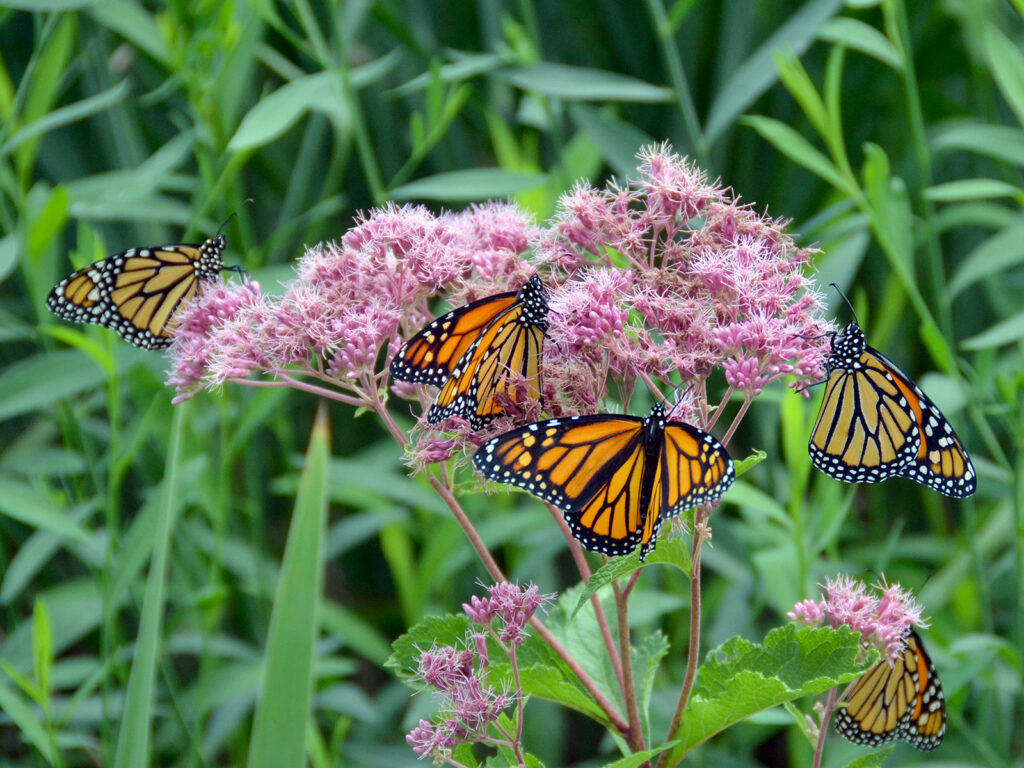
Close doesn’t count!
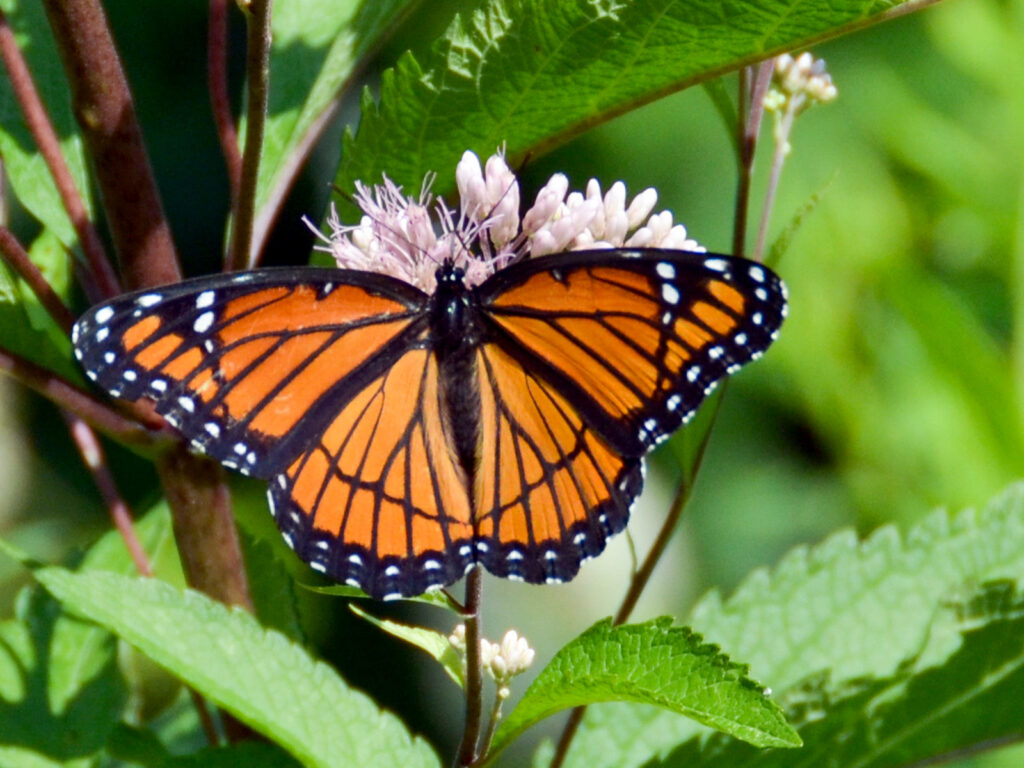
It’s easy to confuse a viceroy (shown in the photo) with a monarch.
The easiest clue: The line across the wing signals that it’s a viceroy, not a monarch.
(The queen butterfly might also be confused with a monarch, but I’ve never seen one in my yard.)
The fascinating story
The most amazing thing about monarchs is that they arrive here in Central New York at all. After all, these individual butterflies that arrive in CNY have never been here before. The overwintering generation leaves Mexico and lays eggs in US states north of Mexico, and these become adults around late April and May. These continue further north, and they lay eggs that become adults, and they lay eggs.
It is this generation — NOT the ones that left CNY the previous fall — that complete the journey to the northernmost reaches of their breeding grounds (i.e. including CNY!), generally first arriving in my yard between mid-June and mid-July.
By mid-August, the first members of the migratory generation will emerge in the north. These butterflies are the great-great-grandchildren of the monarchs that left Mexico last spring. They must make the long journey to Mexico, survive the winter, then return to their breeding territories in the south next spring.
Amazing!
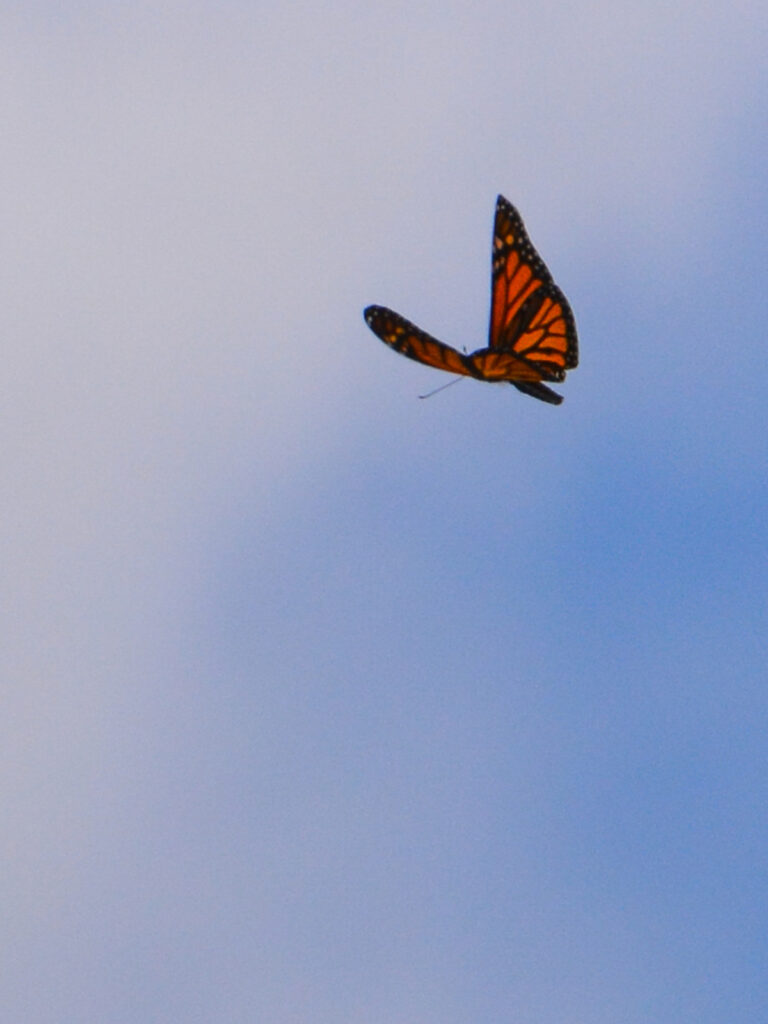
Spring arrival
Dates of our first sightings in our yard:
- 2007: June 23
- 2008: June 22
- 2009: June 26
- 2010: June 24
- 2011: June 16
- 2012: May 20 – very early with an early spring
- 2013: July 18 – very late; saw only 4 all summer and no eggs!
- 2014: July 10 – late, and found 7 eggs over the summer
- 2015: July 5 – didn’t see the adult, but we found one egg
- 2016: We saw very few all summer (and didn’t note dates of ones seen)
- 2017: June 5
- 2018: June 22
- 2019: July 11
- 2020: July 4
- 2021: June 18
- 2022: July 6
- 2023: July 11
- In summary, the dates of first sightings (regardless of year) in order are:
- May 20
- June 5, 16, 18, 22, 23, 24, 26
- July 4, 5, 6, 10, 11, 11, 18
Fall departures
Dates of our last sightings in our yard:
- 2007: Oct. 3
- 2008: Sept 25
- 2009: Sept 23
- 2010: Sept 19
- 2011: Oct 10
- 2012: Sept 20
- 2013: Sept 23
- 2014: Oct 9
- 2015: Oct 6
- 2016: Sept 26
- 2017: Oct 23
- 2018: Oct 10
- 2019: Sept 11
- 2020: Sept 23
- 2021: Oct 19
- 2022: Sept 27
- 2023: Sept 28
- In summary, the dates of Last sightings (regardless of year) in order are:
- September: 11, 19, 20, 23, 23, 23, 25, 26, 27, 28
- October: 3, 6, 9, 10, 10, 19, 23
More about the monarch
Food for the ADULT monarch butterfly is the same as for all other butterflies. It’s not hard to provide nectar plants for the adult butterfly — just plant a native flower garden and they’ll have plenty.
It’s the CATERPILLARS we have to make sure we provide for: In other words, milkweeds!
And now it’s thought that DEAD plants of certain genera may be an important “pharmacy” for monarch adults.
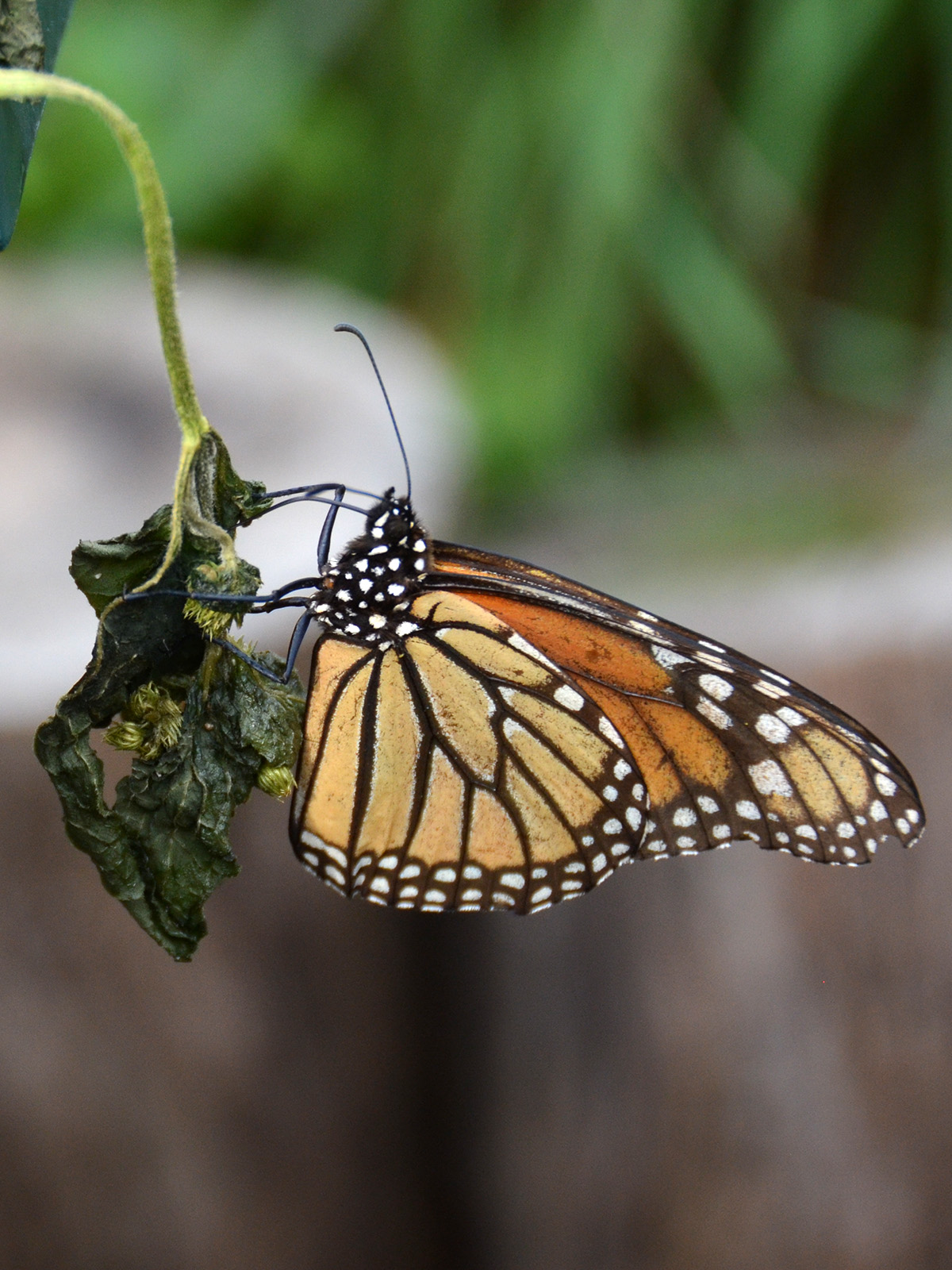
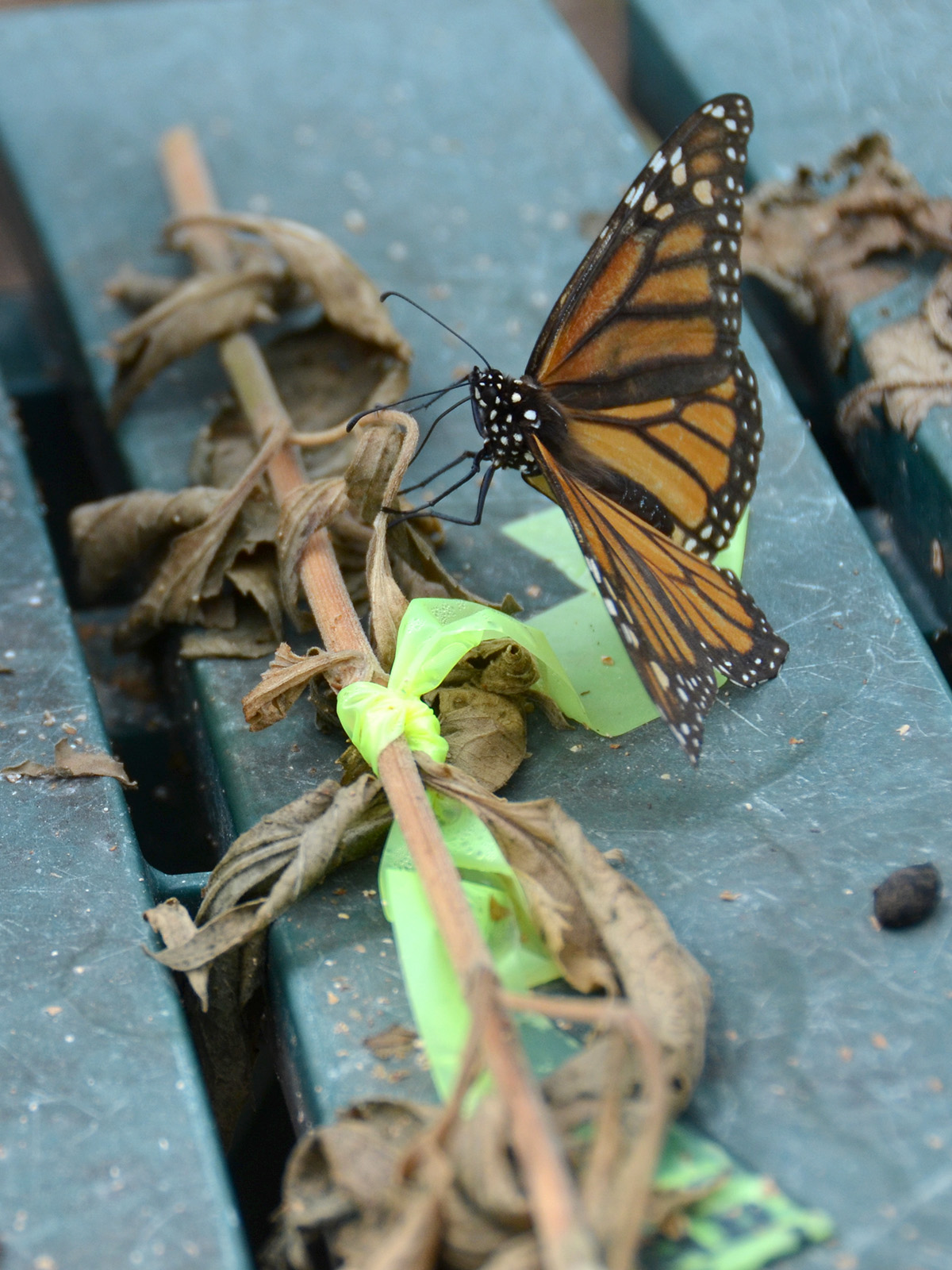
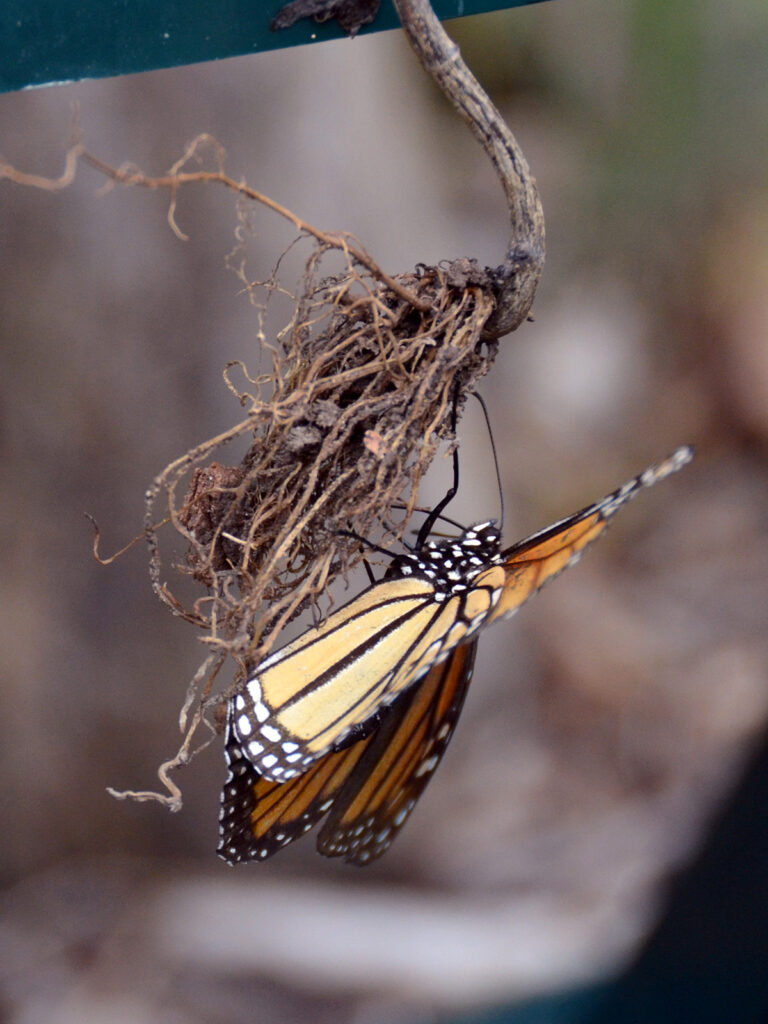
To take part in the new Monarch Rx community science project I put some “bait” plants on a table in the backyard.
I was surprised to see that within a few days I noticed a monarch actually using these plants — even the roots!
Evidently, they use the plants’ pyrrolizidine alkaloids (toxic for many other animals).
Who would have thought that monarchs would need certain types of dead plants in addition to milkweeds and nectar plants?
What other essential bits of habitat do our yards omit or actively eliminate?
For more info on this developing science, see the Resources section below.
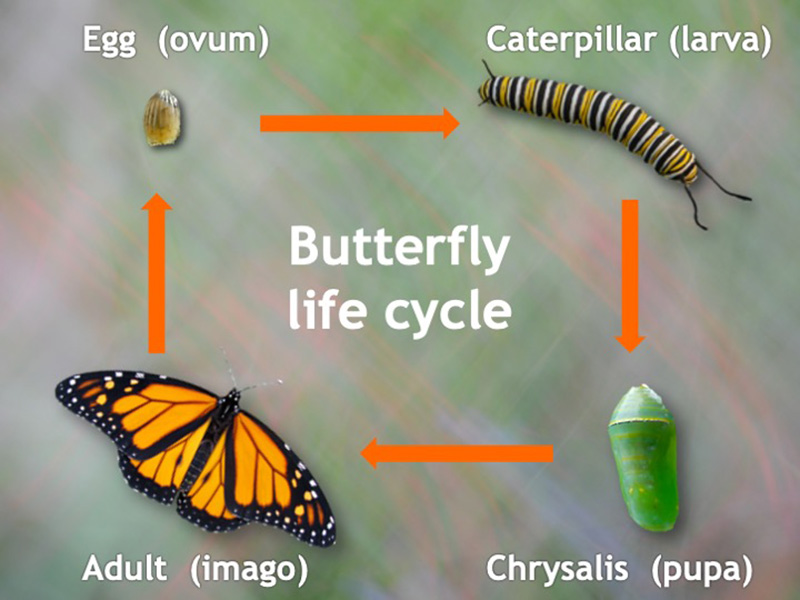
The monarch’s life cycle:
- The mating and egg stage
- The caterpillar (larva) to chrysalis (pupa) stage
- The chrysalis (pupa) to adult butterfly (imago) stage
Milkweeds for monarchs:
- Types of milkweed for our ecoregion
- Growing milkweed and some possible problems growing them
- Monarch-unfriendly invasive plants
Monarch conservation:
- Raising monarchs inside
- Our Monarch Waystation
- Monarch conservation
- Citizen science helping monarchs
Resources
- Wild Ones
- Wild for Monarchs brochure – Currently unavailable on the WO website, but still available on the Monarch Joint Venture website. Wild Ones is a MJV partner.
- Journey North:
- Monarch resources – informative collection of articles, maps, slideshows etc
- Directional flight
- Especially good resource for schools
- Monarchs basking
- Monarch look-alikes
- Xerces Society:
- Grow Natives:
- NY Times:
- Smithsonian Institution:
- NOVA:
- Encyclopedia of Life:
- VIDEO: Monarch Butterflies Migration Google Earth Tour – Tour of the migration
- Monarch Joint Venture
- Monarch Watch:
- Their home page has lots of resources
- TEDx:
- National Park Service:
Rx for monarchs
- The Humane Gardener:
- Joe Gardener:
- Monarch Rx – The prescription for healthier butterflies
- Entomology Today:
